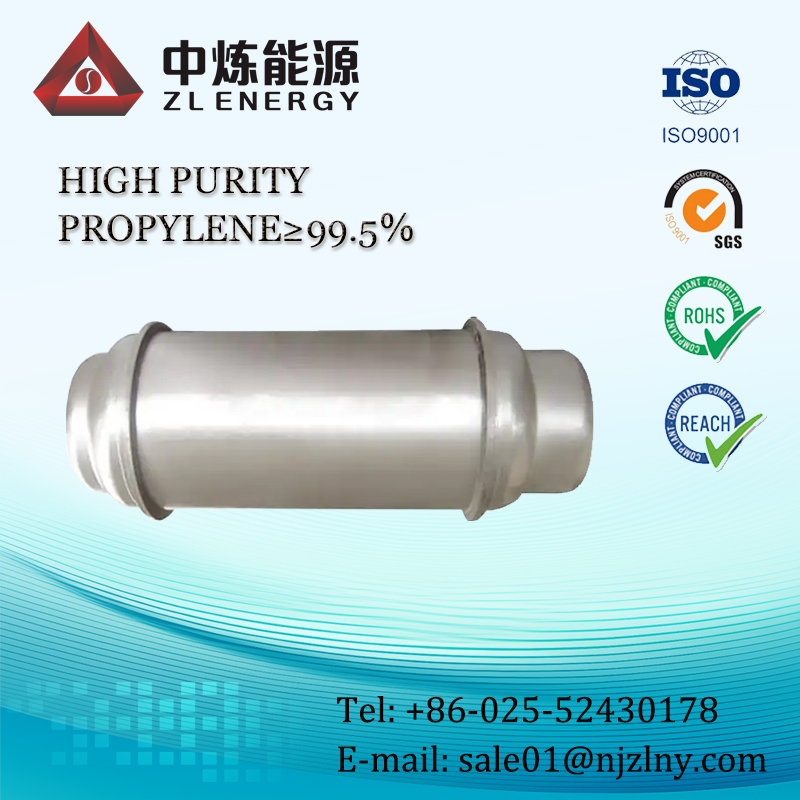




Propylene R1270
The structural formula of propylene is CH₂=CH-CH₃, which can also be abbreviated as C₃H₆.
The basic definition and properties of Propylene R1270
Propylene is an organic compound with the chemical formula C₃H₆ and a molecular weight of 42.08. It is a colorless, slightly sweet gas that is in a gaseous state at room temperature and pressure. Propylene is flammable, produces a bright flame when burning, and has an explosion limit of 2% to 11.1% in air. Propylene is insoluble in water, but is easily soluble in organic solvents such as ethanol and ether. In addition, the melting point of propylene is -185.2℃, the boiling point is -47.4℃, and the relative density in liquid state is 0.5193. These physical properties make propylene widely used in industrial production and scientific research.
The structural formula of propylene has important application value in chemical reactions. First of all, the carbon-carbon double bond of propylene makes it an important raw material for synthesizing polymer materials. Through polymerization, propylene can generate polypropylene (PP), which is an important thermoplastic with excellent mechanical properties, chemical corrosion resistance and electrical insulation. Secondly, propylene can also generate propylene oxide through oxidation reaction, which is an important raw material for the production of polyols and polyurethanes. In addition, propylene can also be used to produce a variety of organic compounds such as acrylonitrile and propylene oxide, which are widely used in chemical, pharmaceutical, electronic and other fields.
Introduction to the industrial preparation and use of Propylene R1270
Propylene is mainly produced through processes such as petroleum cracking and catalytic cracking. During the petroleum cracking process, larger hydrocarbons are decomposed into smaller hydrocarbon molecules, including ethylene and propylene, at high temperatures. Catalytic cracking uses catalysts to crack heavy oil into light hydrocarbons at lower temperatures. In addition, propane dehydrogenation is also an important method for producing propylene, which converts propane into propylene and hydrogen. As an important chemical raw material, propylene has a wide range of uses. In addition to being used to produce polypropylene, propylene is also used to manufacture a variety of organic compounds such as acrylonitrile, propylene oxide, isopropanol, phenol, acetone, etc. These compounds are widely used in plastics, rubber, fiber, coating, adhesive, etc. With the development of global economy and the acceleration of industrialization, the demand for propylene continues to grow, and its industrial preparation and application technology is also constantly innovating and developing.